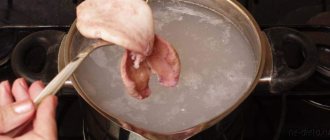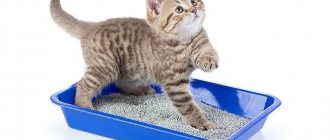Whether it is necessary to iron bed linen is a relevant question at all times, since not everyone enjoys the ironing procedure. But you have to devote time to this activity. The reason is not only the aesthetic appearance of the bed. The decisive factor is that heat treatment kills bacteria and germs. And to prevent ironed bedding from looking wrinkled, you need to master some tricks of such a difficult task.
Bed linen after washing: ironing tips
To get an excellent result after the ironing process, you should follow some tips:
- The sheet must be removed from the washing machine immediately after washing to avoid the formation of difficult-to-smooth wrinkles;
- Before drying, the laundry is gently shaken and straightened;
- the sheet should not be overdried, let it be a little damp, ironing is much easier;
- so that the holes that appear under the action of the hot sole of the iron do not become larger, they are sewn up;
- the material can deteriorate due to ironing the same place for too long.
Please note: Each fabric type has a specified maximum temperature limit. It is usually printed on the item's tag.
You can simply remember the temperature conditions of some fabrics:
- chintz - 170 degrees, ironed on the front side, slightly moistening with steam;
- silk – less than 80 degrees, it is better to use a steamer;
- linen – 200 °C, ironed with strong pressure from the iron on the reverse side;
- cotton 180°, a steam generator helps a lot;
- viscose up to 120 degrees, ironing should be done through gauze.
If the iron is crossed out on the label, then the item cannot be ironed to prevent it from getting damaged.
How to iron bed linen on an ironing board?
In order to properly iron bed linen on an ironing board without much hassle and wasting time, as well as without damaging things, you need to adhere to a certain algorithm and useful tips.
Selecting the temperature setting on the iron
Before subjecting the fabric to heat treatment with an iron, you must be sure to familiarize yourself with the composition of the fabric, which should be indicated on the label. For each type of matter you need to use your own temperature regime:
- Cotton, bamboo, satin and tencel are ironed at 200 degrees.
- Linen products can be ironed at temperatures up to 210-230 degrees.
- Silk is a very delicate material and can be easily damaged, so the iron should be set to a temperature no higher than 50 degrees.
- Jacquard should be ironed at a temperature of 120 degrees.
Important! Before ironing, make sure the iron soleplate is clean and the water in the iron reservoir is fresh. This way you will prevent the appearance of unsightly stains, which will later be difficult to get rid of on clean linen. To check, run a clean cloth over the soleplate of the iron. If there are no marks left on it, you can start ironing the bedding set.
Direct ironing
The process of ironing a bedding set is not very different from ironing any other item:
- After heating the iron to the desired temperature, lay the laundry on the ironing board and move the device along it. The fabric should become smooth.
Important! Sudden movements during ironing are inappropriate. The process should be carried out calmly, without unnecessary fuss.
- Dark-colored linen must first be turned inside out, otherwise the fabric will acquire a glossy shine. Also, the embroidery needs to be processed on the reverse side so as not to disturb the relief of the set’s decor.
- If the pillowcase has buttons, then you need to start ironing from the areas with loops, and then move on to another part. Pay special attention to the corners.
- It is better to iron a sheet when it is folded in half lengthwise. If the material is dense, then ironing will need to be done on both sides. Thin fabric can only be ironed on one side.
Important! If you find an unwashed stain on the fabric, do not continue ironing. First, you need to completely get rid of the dirt on the fabric, since after ironing the stain will become more noticeable, and it will be much more difficult to get rid of it. The dirt is literally “baked” into the fibers.
- Before ironing the duvet cover on the ironing board, you need to carefully smooth out the creases with your hands. Iron one side first and then the other, paying special attention to the corners. After this, you need to fold the duvet cover in half and iron it again.
Important! You cannot immediately hide ironed linen in a closet for storage. Give it some time to cool completely.
Ironing various types of fabric
As mentioned above, each fabric requires special care. We have already talked about the temperature regime, but there are still some rules regarding the heat treatment of matter:
- Calico. Very often this material is used for sewing bed linen. This set should be ironed by slightly moistening it with water, or while still damp after washing.
- Satin. This fabric is easy to iron. It does not form a large number of wrinkles even after washing. Iron satin exclusively dry, only from the inside out, as water stains may remain on it.
Important! If you used conditioner when washing satin linen, you can skip ironing altogether.
- It is advisable to iron cotton on both sides.
- Silk sets are ironed under-dried, only on the wrong side.
- Terry sheets should not be ironed at all, as they then become hard and unpleasant to the touch.
- The chintz is ironed from the front side, treated with water from a spray bottle.
- Synthetics should be ironed through a clean cloth or gauze when dried.
Important! It is not recommended to spray synthetic fabrics with water from a spray bottle, as stains may remain. The same rule applies to silk.
Why ironing, is it right?
Why iron bed linen? Many women love ironing, so they constantly iron their bed linen. Of course, this procedure has many advantages:
- a neat appearance outwardly shows the cleanliness of the housewife;
- well-ironed linen is soft and airy;
- the sheet will be stronger;
- germs, mites, bacteria are destroyed;
- Takes up less space in the closet.
In addition to the positive aspects, ironing has disadvantages:
- after hot processing, the aroma of the detergent disappears;
- the sheet will absorb less moisture, sweat will remain on the skin, clogging its pores;
- to iron the laundry, the housewife will need a lot of time, effort, and electricity will also be wasted;
- Some fabrics become electrified after ironing, which will have a bad effect on good sleep and rest.
Attention! If you wash and dry your bed linen using the correct technology, then ironing will no longer be necessary.
Whether it is necessary to iron bed linen or not, everyone decides for themselves, analyzing all the nuances.
How to make ironing quick
To make the process go faster, you must follow certain rules:
- First, they are sorted by fabric type.
- Those fabrics that require a lower temperature are ironed first.
To ensure that the work proceeds quickly and the quality of the material is not affected, preparatory measures are carried out before starting work. Inspect the soleplate of the iron - it should be clean. Pour fresh boiled water into the compartment. Only after this the main work begins.
Tips to speed up the process:
- It is best to iron bed linen when it is slightly dry.
- Terry sheets do not need to be ironed if you dry them on a horizontal surface.
- To iron faster, fold the sheets in half and carefully smooth out the folds. After this, they are folded again and ironed again. This is done until the sheet is folded to the desired size.
- The procedure for ironing a duvet cover is similar, only initially you need to fasten the existing zippers or buttons.
- The pillowcase is ironed quickly on one side.
- If it is not possible to iron immediately, then the sets must be rolled up and placed in a pile. In this form they will lie as if under a press, which will greatly facilitate the work in the future.
Sets made of dark fabrics are ironed from the wrong side.
Techniques for ironing sheets
To properly iron a simple sheet, follow these steps:
- The sheet is folded four times with the front side up. The corners of the top and bottom are connected, then folded again, parallel to the resulting fold.
- Having placed the resulting structure on the ironing board, iron the surface without running the iron into the folds. They are not ironed at all, so as not to create unnecessary folds.
- Next, you need to turn the product over and iron it the same way as the first part.
- Then unfold the sheet once and fold it inside again with the ironed side.
- The product is folded perpendicular to the previously made bend and the iron is passed over the unironed surface. The manipulation is also performed twice.
Attention! The sheet should be ironed along the warp thread (from left to right), and not from top to bottom. First of all, iron the existing seams.
A sheet with an elastic band: how to iron it
An elastic band on the sheet, sewn around the entire perimeter, helps housewives cope with the problem of creasing and the appearance of folds during rest. The product is securely attached to the mattress. But many women don’t know how to iron a sheet with an elastic band without effort. Ironing this bedding can take twice as long as ironing a regular product.
Effective methods, step-by-step implementation of work
In fact, there are several simple and easy options for ironing a sheet with an elastic band:
- Folding four times. The point of this technique is to fold the stretch sheet 4 times and insert the corners into each other. You get three right angles and one where the most tightly gathered part of the elastic is located. The corner with an elastic band is placed on the semicircular part of the ironing board, the product is straightened and then the surface is ironed. Turn the sheet upside down and run the iron over the fabric again.
- No folding. The method is simple, but it takes a lot of time. Having laid the product on the base, iron the middle part. The edges, tightened with an elastic band, are smoothed onto the rounded part of the board, slightly stretching the fabric. This is how they gradually pass along the entire perimeter. When ironing is finished, you need to fold the ironed linen correctly.
- Ironing on the bed. First, put the sheet on the mattress, stretching out all the folds. Then a hot iron is passed over the entire surface of the product. This option is suitable if the sheet remains in place. If the cord of an electrical appliance is short, you must connect it to an extension cord.
- Do not iron corners. If you need to quickly iron a sheet, you can use this method. The product is folded along the long side, stretched on a board and ironed. Then you can fold it crosswise and iron it again. It will turn out great, as the corners will straighten out when you pull them onto the mattress.
How not to wrinkle a sheet when folding
Ironed laundry should be folded properly to prevent it from becoming wrinkled again. Each woman puts sets in her closet differently: in a stack or in a pillowcase. But the most difficult thing is to neatly fold a sheet with an elastic band.
We recommend:
How to iron jeans after washing
To do this you need to do the following:
- Insert the hands into two corners and put both on one hand.
- With the freed hand, take the third corner and add it to the folded ones.
- The same manipulation is done with the last corner.
If you do it correctly, you will definitely end up with a rectangular package that can be placed in a pile or stuffed into a pillowcase.
Important! Do not store bedding in cellophane that does not allow air to pass through. Since the development of pathogenic microflora may occur.
Face or back?
Most fabrics are ironed right side out, so bedding is folded inside out before ironing. If the products have embroidery, it is ironed from the inside out on a soft bedding, after which the duvet cover or pillowcase is turned out and smoothed from the front side, bypassing the embroidered areas . On dark fabrics, the iron can leave noticeable marks, so it is best to fold such items with the wrong side up. You can fold them in the same way for storage.
Related article: DIY box for small items: master class on making
It is better to process silk products immediately after washing, without drying them slightly. They are ironed at minimum temperature and only on the wrong side. It must be remembered that water can leave unsightly stains on silk, so it should not be sprayed. When folding such items before ironing, it is better to cover them with a damp cloth.











